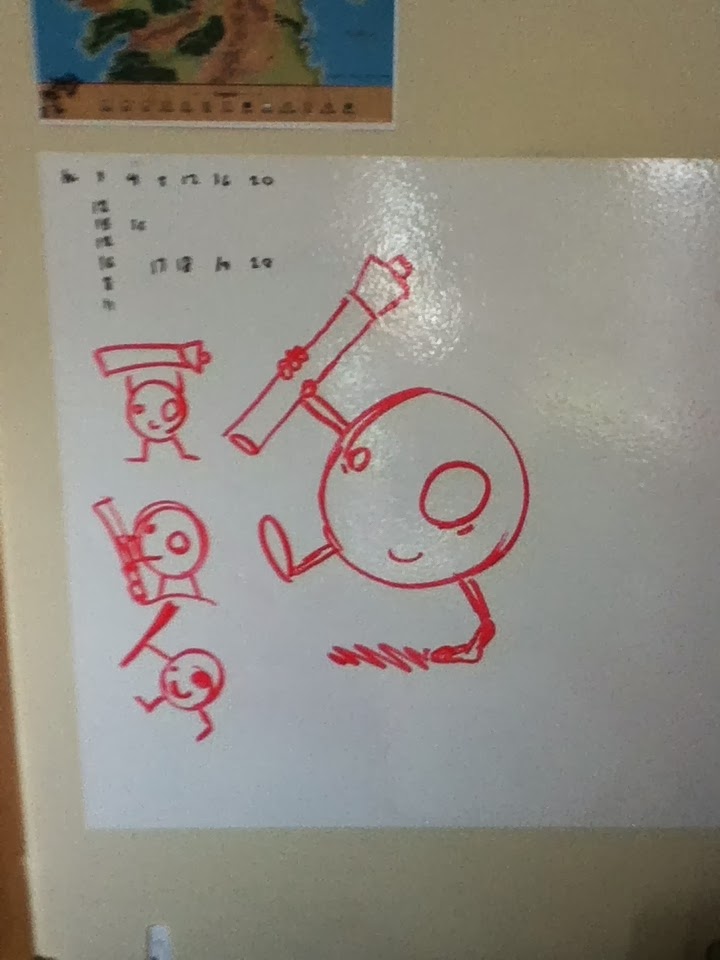So I started on my logo sketches, first on the white board wall stickers I have in my room:
The blog title sort of hints towards my love of whiteboards, but I've found that they are amazingly helpful. I realized it when Ira Fey, possibly the best Game Design teacher, held Skype interviews with professionals in the field. Four of the five designers had huge whiteboards in their rooms (yeah, I kept track), so naturally, I took notice. Having a huge writing surface readily available has come in handy for me more than once, I highly recommend it. If you need to be convinced, I'd suggest you read this article.
But I digress, back to the logo sketches:
After the concepting, I put ink to paper in the most painstaking process ever! Pens bug me out, since once it's on paper, that's it. Not pictured are the three pages of mistakes.


















